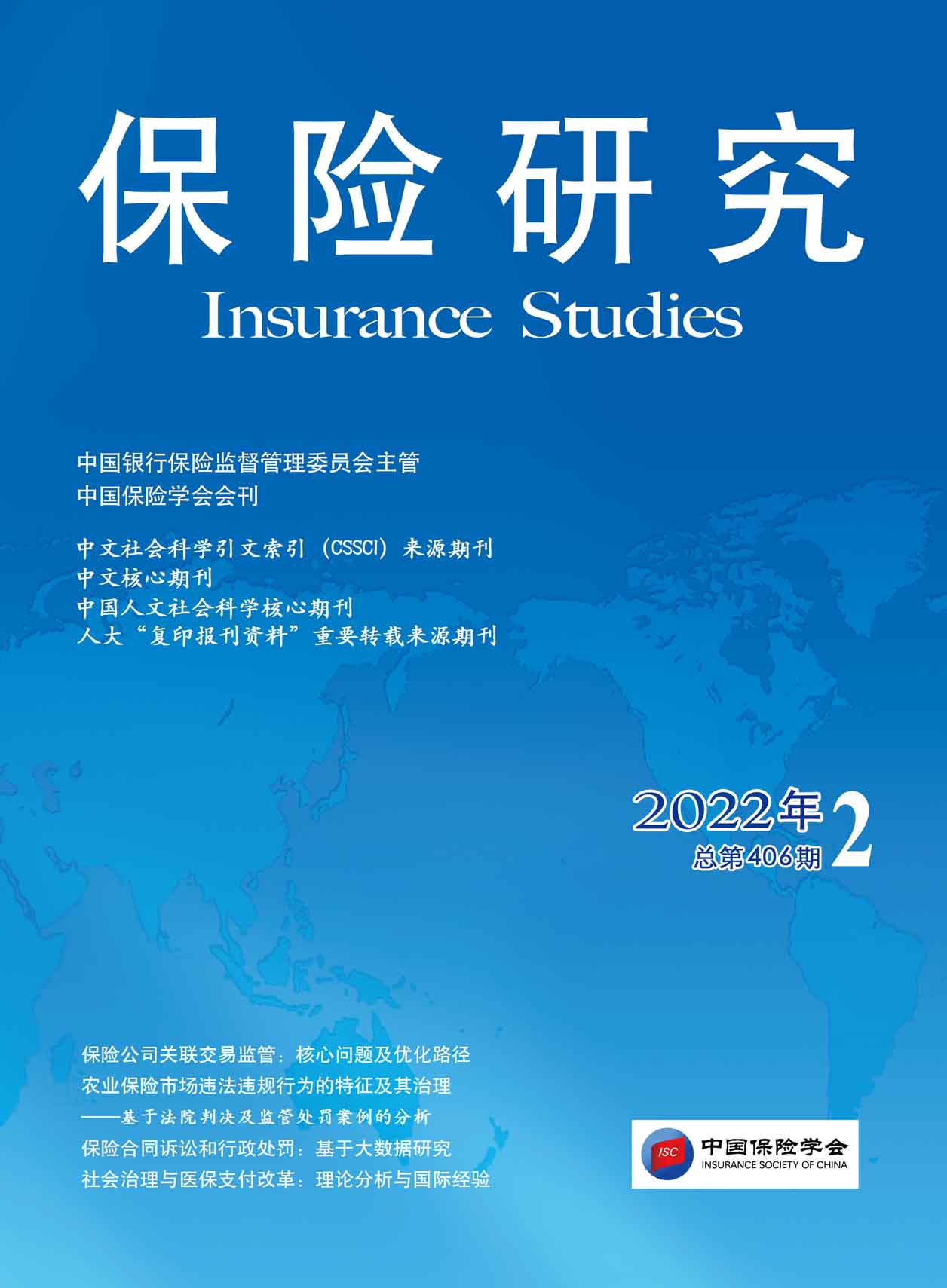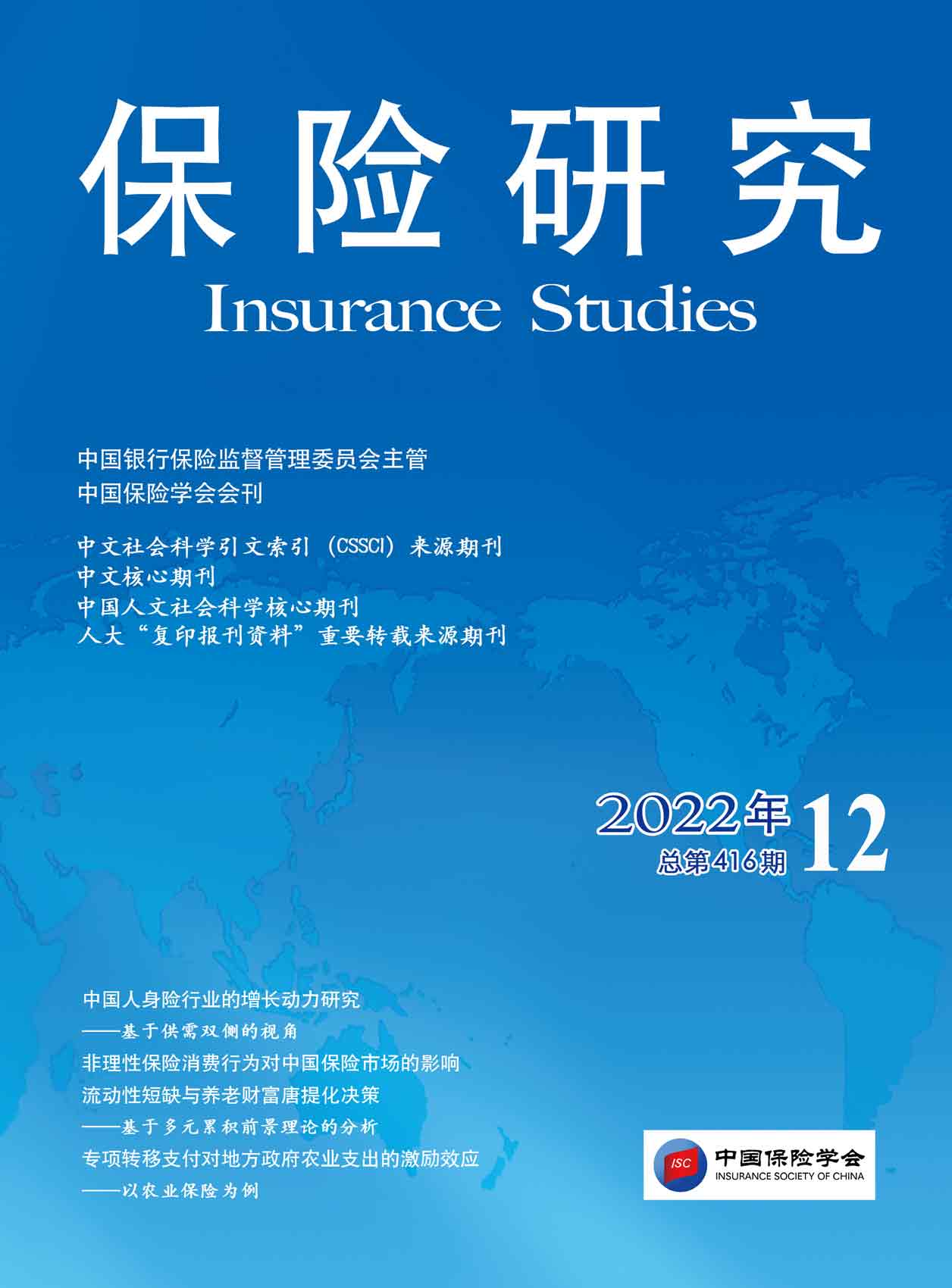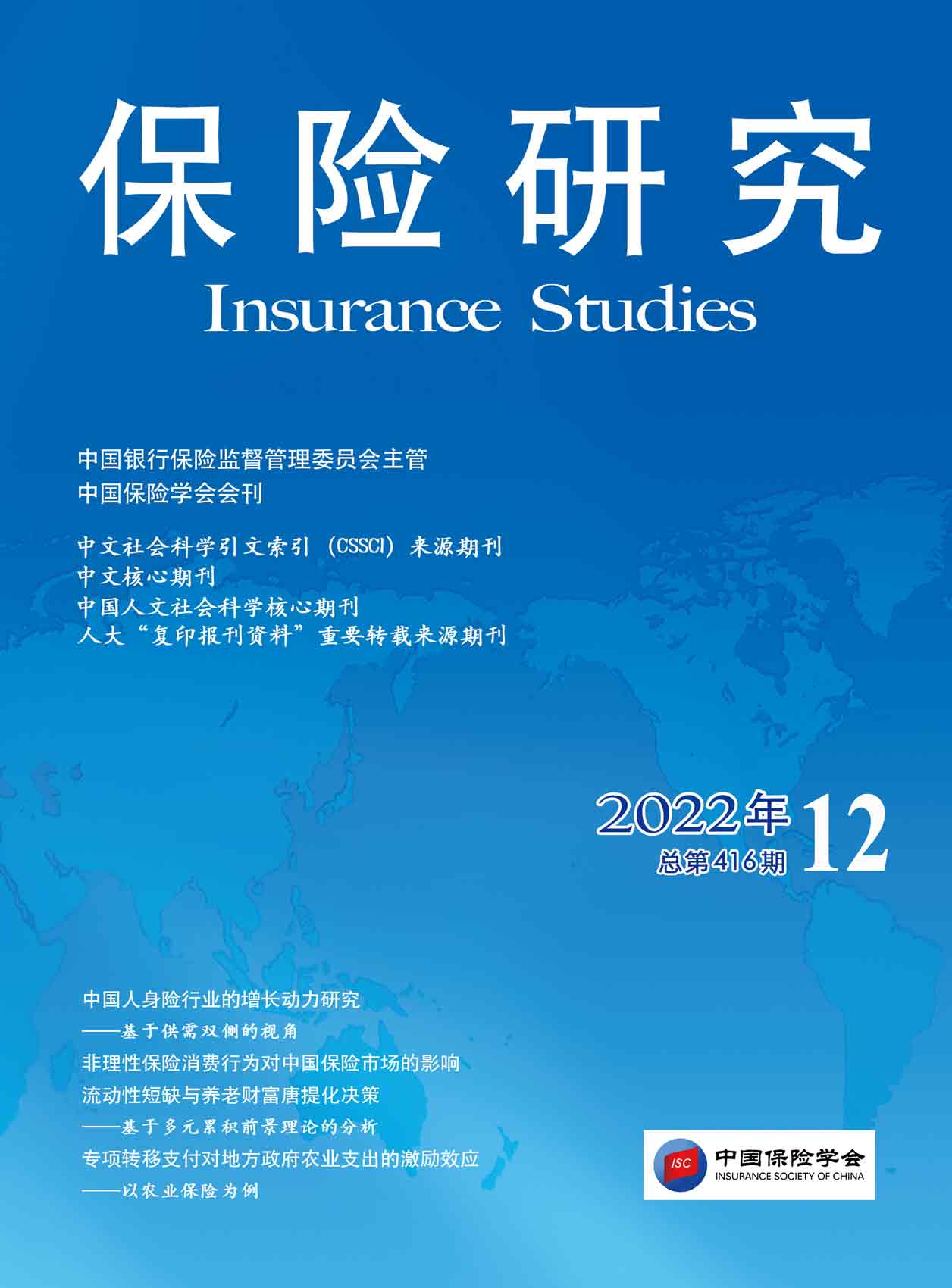
《保险研究》20220202-《保险业资产驱动型经营模式会助推系统性金融风险吗?》(尚颖、贾士彬、毕书琨)
[中图分类号]F842[文献标识码]A[文章编号]1004-3306(2022)02-0017-16 DOI:10.13497/j.cnki.is.2022.02.002
资源价格:30积分
- 内容介绍
[摘 要]资产驱动型经营模式的出现,为保险公司特别是中小型保险公司提供了新的竞争思路,但对市场竞争环境、监管的有效性提出了更高要求,同时也埋下了新的隐患。一方面,该模式可能会在整个保险行业形成“羊群效应”,引起保险业系统性风险的发生,更为严重的是,该模式也可能由于经营者的短视行为引发资产负债错配风险,产生流动性风险甚至偿付能力不足问题,将风险更直接、更快速地传导至其他金融行业,引发系统性金融风险。基于此,本文选取2013~2019年55家寿险公司数据,采用面板门限回归模型,并考虑内生性问题,分析了不同偿付能力水平下,资产驱动程度对系统性金融风险形成的三个阶段,即风险承担阶段、风险传染阶段和风险倍增阶段的非线性影响。结果表明,风险承担阶段和风险传染阶段是系统性风险防范的关键,风险倍增阶段的通道并未形成。因此基本可以判定,当前资产驱动型经营模式引发系统性金融风险的可能性不大,但具有助推作用,对其实施从严的偿付能力监管至关重要。
[关键词]资产驱动型经营模式;系统性金融风险;偿付能力监管;面板门限回归模型
[基金项目]本文受国家社科基金青年项目“资产驱动型经营模式冲击下金融风险共振、预警及防控研究”的资助,项目编号18CJY065。
[作者简介]尚颖,河北大学经济学院金融系副教授,研究方向:保险风险管理;贾士彬(通讯作者),河北大学经济学院金融系副教授,研究方向:金融风险;毕书琨,现就读于河北金融学院大数据科学学院经济统计学专业。
Does the Asset-driven Business Model of the Insurance Industry Trigger off Systemic Financial Risks
SHANG Ying,JIA Shi-bin,BI Shu-kun
Abstract:The emergence of the asset-driven business model has provided new competitive means for insurance companies,especially small and medium-sized insurance companies,but has put forward higher requirements for the market competition environment and the effectiveness of supervision,and at the same time,it has also planted new hidden dangers.On the one hand,this model may form a "herding effect" in the entire insurance industry,leading to the occurrence of systemic risks in the insurance industry.More seriously,this model may also give rise to asset-liability mismatching risks,liquidity risk or even insufficient solvency due to the short-sighted behaviors of insurers.Then it may transmit to other financial sectors more directly and faster,leading to the outbreak of systemic financial risks.Based on this,and taking into account endogenous problems,this paper selected sample data of 55 life insurance companies from 2013 to 2019,and used a panel threshold regression model to analyze the non-linear impacts of the asset-driven intensity on the three stages of systemic risk formation under different solvency levels,namely the risk bearing stage,the risk contagion stage and the risk multiplier stage.The result shows that it is key to exerting risk prevention measures in the risk bearing stage and the risk contagion stage,and the risk multiplication channel has not been formed.Therefore,it can be roughly determined that the current asset-driven business model is unlikely to lead to systemic financial risks,but it can boost systemic financial risks and it is essential to implement strict solvency supervision.
Key words:asset-driven business model;systemic financial risk;solvency regulation;panel threshold regression model

《保险研究》20221201-《中国人身险行业的增长动力研究——基于供需双侧的视角》(杨斐滟、何薇、陈滔)

《保险研究》20221202-《非理性保险消费行为对中国保险市场的影响》(郭振华、朱少杰)

《保险研究》20221203-《流动性短缺与养老财富唐提化决策——基于多元累积前景理论的分析》(王力平、隋杰)

《保险研究》20221204-《专项转移支付对地方政府农业支出的激励效应——以农业保险为例》(何小伟、曹杨、刘怡鑫)

《保险研究》20221205-《生猪利润保险在生猪市场调控中的作用研究——以四川省为例》(李亚茹、张海浪)

《保险研究》20221206-《主流机器学习方法识别车险欺诈效果的比较研究》(陈凯、李斌杰)
